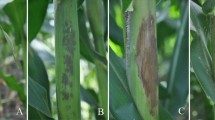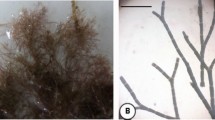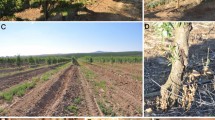Abstract
VASCULAR, discoloration is a prominent symptom of Fusarium wilt of tomato. Phenols are naturally occurring substances capable of discolouring plant tissues upon oxidation by phenoloxidases and polymerization to melanins. Phenoloxidases have been shown to occur in tomato stems1. Accordingly, the pathogen, Fusarium oxysporum f. lycopersici, could cause vascular discoloration by liberating phenols into the host's vascular system.
This is a preview of subscription content, access via your institution
Access options
Subscribe to this journal
Receive 51 print issues and online access
$199.00 per year
only $3.90 per issue
Buy this article
- Purchase on SpringerLink
- Instant access to full article PDF
Prices may be subject to local taxes which are calculated during checkout
Similar content being viewed by others
References
Link, G. K. K., Klein, R. M., Barron, E. S. G., J. Exp. Bot., 3, 216 (1952).
Folin, O., and Ciocalteu, V., J. Biol. Chem., 73, 627 (1927).
Hodgson, R., Peterson, W. H., and Riker, A. J., Phytopath., 39, 47 (1949).
Author information
Authors and Affiliations
Rights and permissions
About this article
Cite this article
DAVIS, D., WAGGONER, P. & DIMOND, A. Conjugated Phenols in the Fusarium Wilt Syndrome. Nature 172, 959–961 (1953). https://doi.org/10.1038/172959a0
Issue date:
DOI: https://doi.org/10.1038/172959a0
This article is cited by
-
Effect of mixed inoculations with Fusarium oxysporum f. sp. lycopersici and F. oxysporum f. sp. dianthi on the phenols content of tomato plants
Netherlands Journal of Plant Pathology (1970)
-
Enzymes in pathogenesis
Proceedings / Indian Academy of Sciences (1969)
-
The occurrence of acid hydrolyzable phenolics in relation toFusarium wilt disease in tomato plants
Netherlands Journal of Plant Pathology (1967)
-
Studies in pectic enzymes of parasitic fungi
Proceedings / Indian Academy of Sciences (1967)
-
Physiology of resistance to fungal diseases in plants
The Botanical Review (1966)



